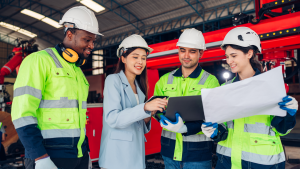The SWOT Analysis is a very widespread tool for business administration and management. Now, ISO standards also use this tool for analysis of the context of the organization. Learn more about what makes this tool so relevant today.
 The term SWOT stands for Strengths, Weaknesses, Opportunities, and Threats. Its creation is credited to Albert Humphrey, who led a research project at Stanford University in the United States of America in the 1960’s and 1970’s using large international corporations.
The term SWOT stands for Strengths, Weaknesses, Opportunities, and Threats. Its creation is credited to Albert Humphrey, who led a research project at Stanford University in the United States of America in the 1960’s and 1970’s using large international corporations.
The tool can be used for several purposes where the main objective is evaluating a scenario. Its main adoption is in strategic planning and assessment for decision making and action plans.
ISO standards do not necessarily require SWOT, but the item “Context of the Organization” which can be found in various standards of management systems, requires a thorough assessment of the internal and external issues pertaining to organization in relation to the particular subject of the standard, whether it be environmental, occupational health and safety, etc.; the SWOT tool is therefore used in this process.

In a SWOT analysis of ISO standards, the internal and external issues specified in requirement 4.1, can be easily identified in the image above. Exemplifying how the organization’s can use this tool to assess their Strengths, Weaknesses, Opportunities, and Threats.
SWOT analysis in the ISO Standards as a tool for implementation of management systems is an innovation. It has added value to the argument that ISO standards serve as a strategic management tool, dedicated to enhance and ameliorate your business.
In addition to the SWOT scenario assessment itself, ISO standards are included in the scope of opportunities. For example, several requirements of ISO 9001, such as the identification of opportunities, take preventive measures on various issues.
Definitely SWOT analysis in ISO standards brings strategic management as the central theme of the standard, thereby helping organizations to be stronger and more competitive and backing up the QMS mission of “building a stronger society through certifications.”
To get in touch with a QMS representative, please send an email to contact@qms-certification.com.










